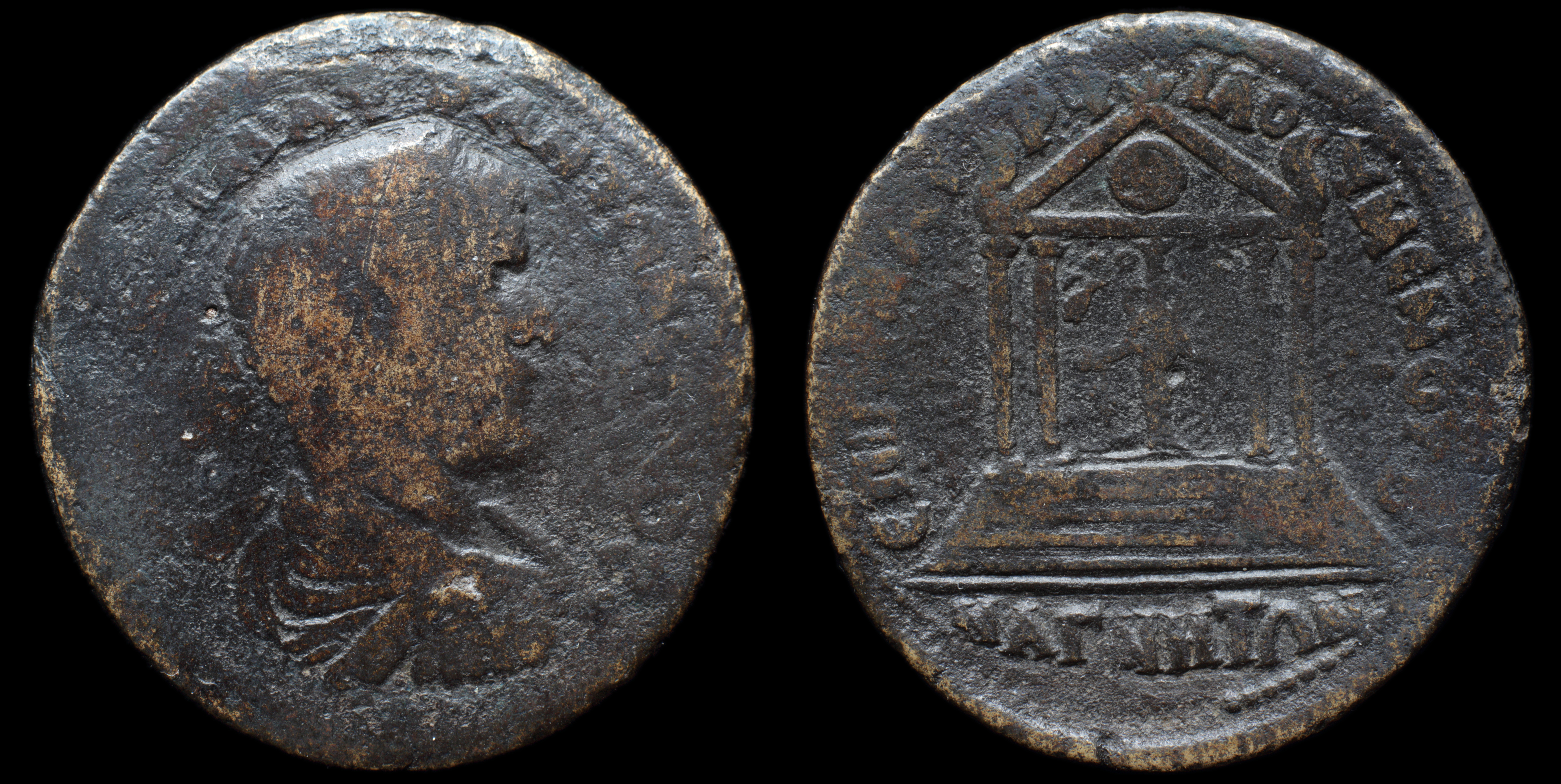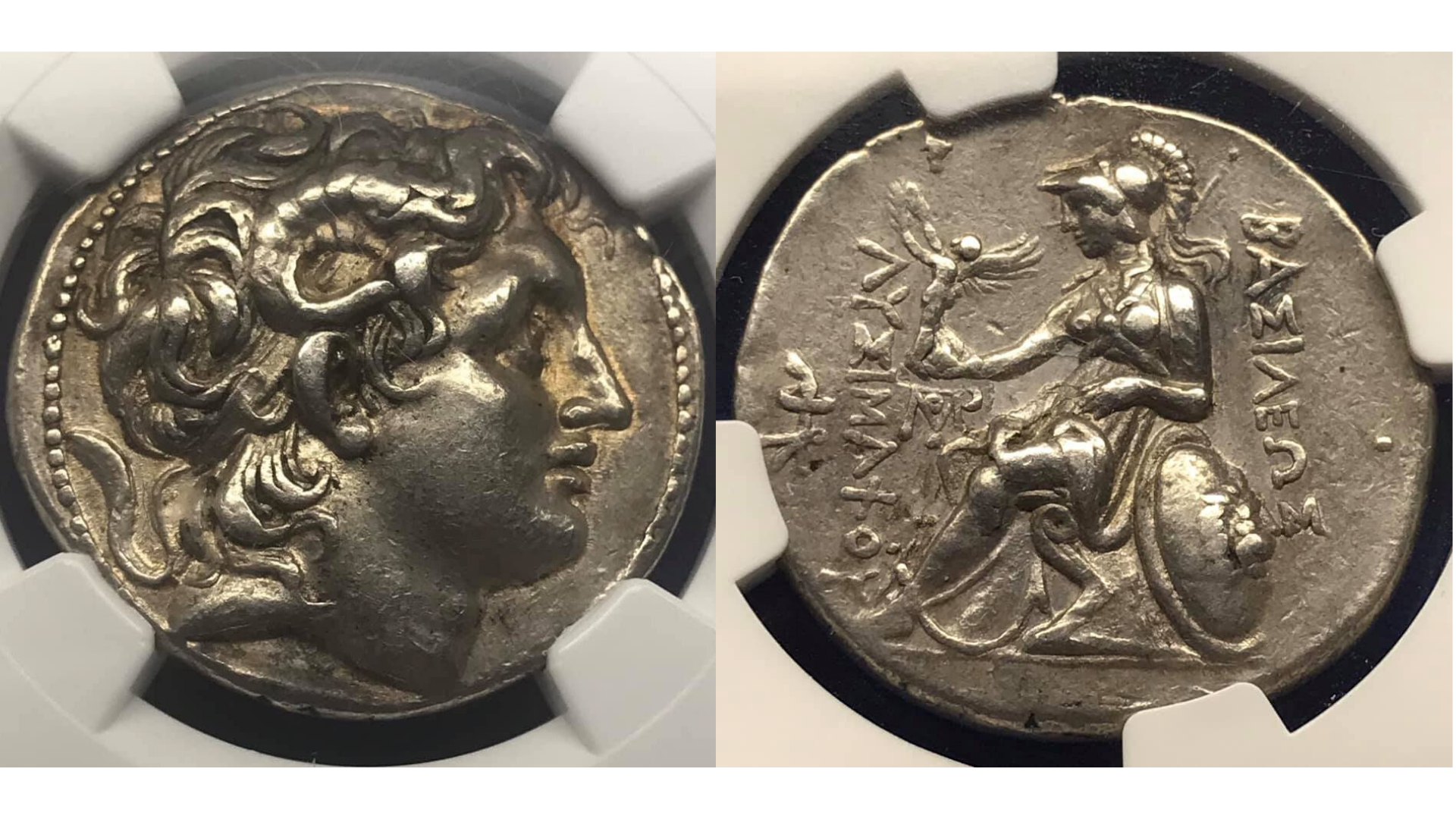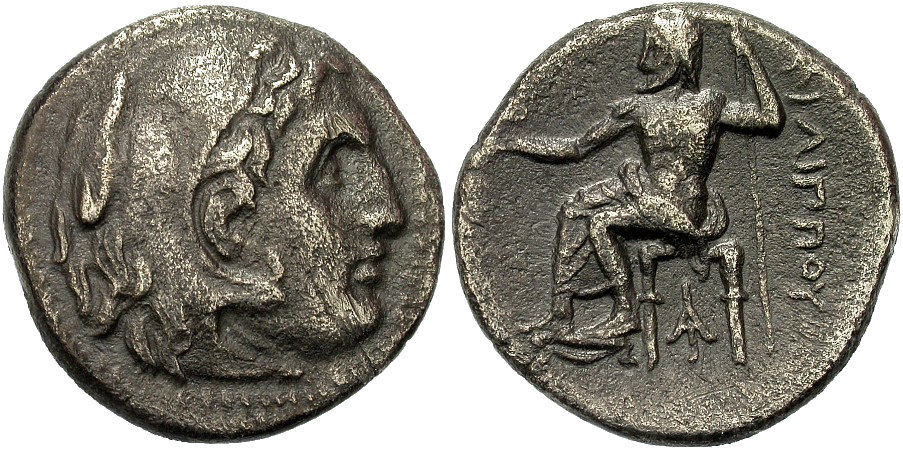Magnesia was an ancient Greek city in Ionia, considerable in size, at an important location commercially and strategically in the triangle of Priene, Ephesus and Tralles. The city was named Magnesia, after the Magnetes from Thessaly who settled the area along with some Cretans. It was later called "on the Meander" to distinguish it from the nearby Lydian city Magnesia ad Sipylum.
The territory around Magnesia was extremely fertile, and produced excellent wine, figs, and cucumbers. It lay within Ionia, but because it had been settled by Aeolians from Greece, was not accepted into the Ionian League. It may have been ruled for a time by the Lydians,and was for some time under the control of the Persians, and subject to Cimmerian raids.
In the time of the Romans, Magnesia was added to the kingdom of Pergamon, after Antiochus had been driven eastward beyond Mount Taurus. After this time the town seems to have declined and is rarely mentioned, though it is still noticed by Pliny and Tacitus.
The territory around Magnesia was extremely fertile, and produced excellent wine, figs, and cucumbers. It lay within Ionia, but because it had been settled by Aeolians from Greece, was not accepted into the Ionian League. It may have been ruled for a time by the Lydians,and was for some time under the control of the Persians, and subject to Cimmerian raids.
In the time of the Romans, Magnesia was added to the kingdom of Pergamon, after Antiochus had been driven eastward beyond Mount Taurus. After this time the town seems to have declined and is rarely mentioned, though it is still noticed by Pliny and Tacitus.
Modern location: Ruins
(1)
Caracalla

An
AE
unit
struck 198-217 AD
in
Magnesia ad Maeandrum
Obverse: laureate, draped and cuirassed bust right from behind; ???AP M AVP ANTΩNINOC
Reverse: Artemis Leucophryene facing within tetrastyle temple, small Nike on both sides; EΠI ΓPA AV_P Φ_IΛO_VMENOV B MAΓNHTΩN
Diameter:
38 mm
Die Orientation: -
Weight: 24 g
Die Orientation: -
Weight: 24 g
Philoumenus, grammateus
SNG Cop. -. Schultz 188
(2)
Lysimachos

An
AR
Tetradrachm
struck 305-281 BC
in
Magnesia ad Maeandrum
Obverse: Diademed head of the deified Alexander right, with horn of Ammon
Reverse: Athena Nikephoros seated left, left arm resting on shield, spear behind; race torch with fillets to outer left, monogram to inner left, ornament on throne.
Diameter:
0 mm
Die Orientation: 0 H
Weight: 17.09 g
Die Orientation: 0 H
Weight: 17.09 g
EF & Fine Style, with pleasing eye appeal; a choice example for this mint. References: Thompson 115; Müller 443a var. (monogram).
Thompson 115; Müller 443a var. (monogram).
(3)
Philip III

An
AR
Drachm
struck c. 323 - 319 BC
in
Magnesia ad Maeandrum
Obverse: Head of Herakles right, wearing Nemean lion scalp headdress
Reverse: ΦIΛIΠΠOY / Zeus seated left on throne without back, nude to waist, himation around hips and legs, right leg forward, feet on footstool, eagle in extended right hand, long scepter vertical behind in left hand, monogram below throne
Diameter:
16.9 mm
Die Orientation: 0 H
Weight: 3.88 g
Die Orientation: 0 H
Weight: 3.88 g
Struck under Menander or Kleito. VF. Attractive style, toned, porous, light marks and scratches.
Struck in the name of King Philip III Arrhidaeus, Alexander the Great's half-brother. Philip III and Alexander's infant son, Alexander IV, were made joint kings after Alexander's death. Philip was the bastard son of Philip II and a dancer, Philinna of Larissa. Alexander the Great's mother, Olympias, allegedly poisoned her stepson Philip III as a child, leaving him mentally disabled, eliminating him as a rival to Alexander. Neither Philip III nor Alexander IV was capable of actual rule and both were selected only to serve as pawns. The regents held power, while Philip III was actually imprisoned. In 317, Olympias had Philip murdered in an attempt to ensure the rule of her grandson.
Price P57, Müller Alexander P89a, SNG Alpha Bank 857
